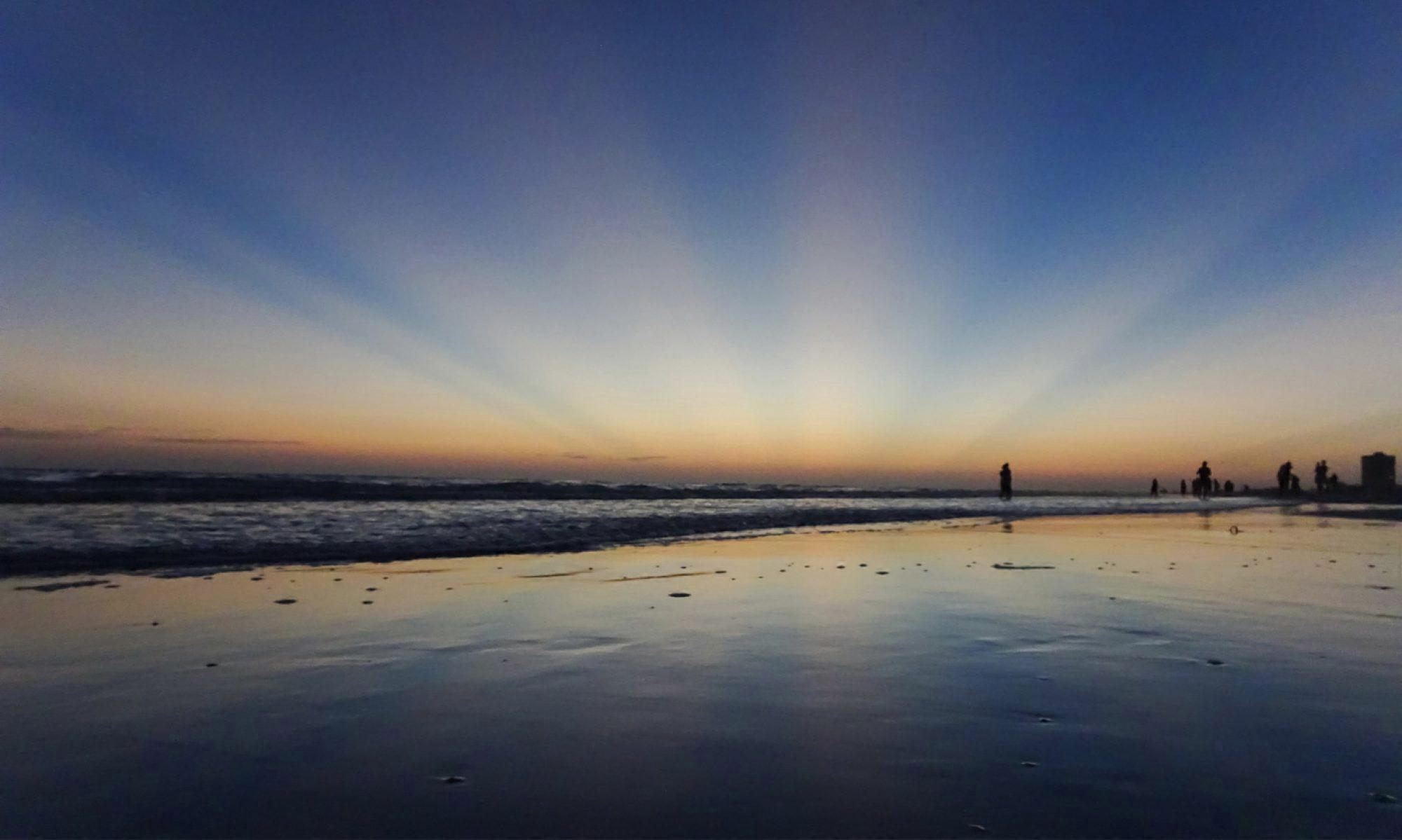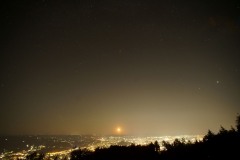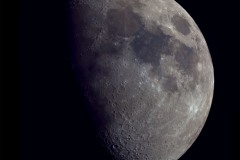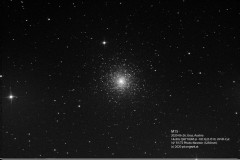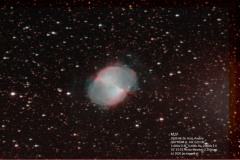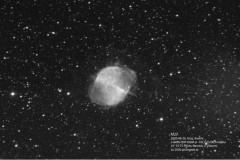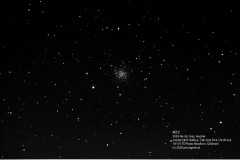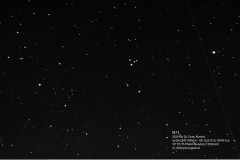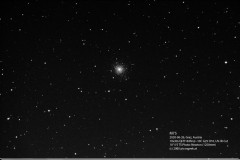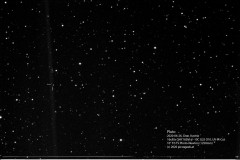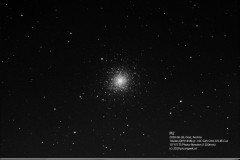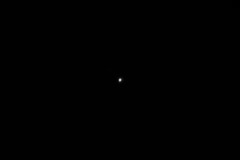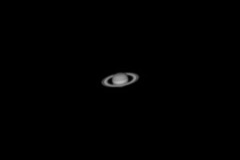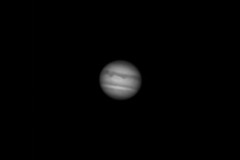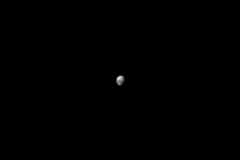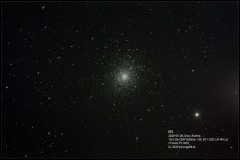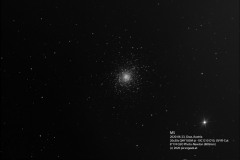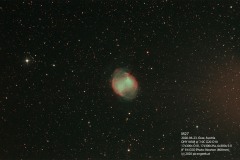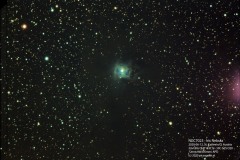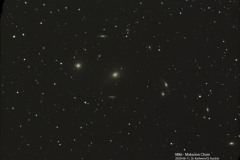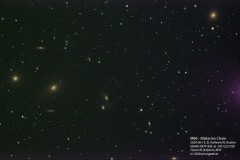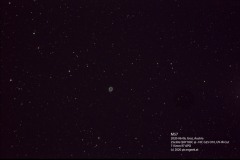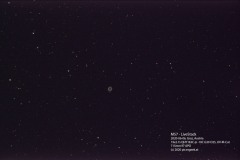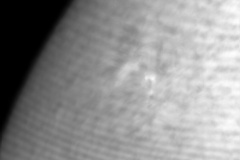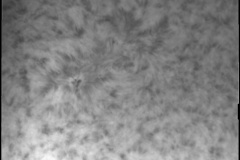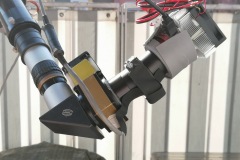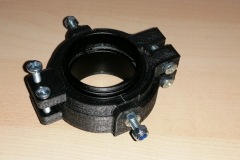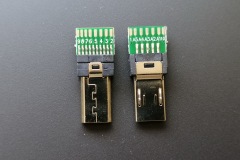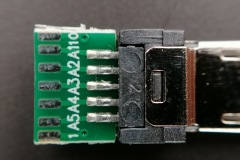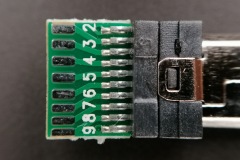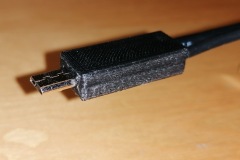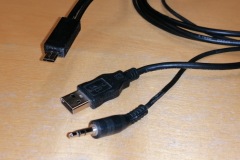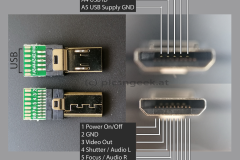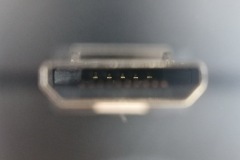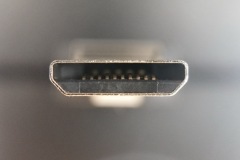Last night, before Comet C2020/F3 NEOWISE rose above the horizon, I created a timelapse with the moon rising over Graz. The first minutes with a deep red moon were amazing 🙂
High contrast moon image
One night of Messier and Planet hunting at home
My limited view from the balcony is not the best for astronomy. I have approximately 120 degree east to west, facing south-east across the city. The maximum altitude i may see stars with the telescope is 74 degrees. Objects positioned low in the sky are blocked by the adjacent building up to 25 degrees. So I have access to only a smaller part of the sky, with typical Bortle 5-6 visibility.
Even though conditions seem to be unfavorable to setup a telescope…
– at times, I have all the planets in view
– the moon is a wonderful sight, even though the air above the city is far from stable
– several deep sky beauties come into view almost year round
– using light pollution filters work really well under these conditions
– I may view or image every night (time and weather permitting) without the hazzle of packing, driving an hour to one of the next darker sites, setting up, …
To proof that the night sky has still a lot to offer in light polluted urban places, I collected the images below in one single night, within less than 4 hours:
M5 globular cluster in different exposure settings
Speed of optics and exposure times have a great impact on the resulting image. Even though a higher quantity of individual exposures may improve the result, the total amount of photons collected is key.
The 715mm f/7 APO is significantly slower than the 800mm f/4 photo newton, the total capture time of 600s vs 1560s produces a significantly better result:
M27 in Hubble color
Makarian Chain and Iris Nebula
M57 LiveStack vs longer exposures
Tilt Adapter for narrow band solar imaging
Imaging with narrow band H-alpha filters for solar imaging (prominences and chromosphere) requires the light beam to be almost parallel before entering the special interference filter called Etalon filter. This is achieved by i.e. telecentric systems, also extending the focal length by a factor of 2-4x. The sensor protection glass and anti-reflection glass of the camera create reflections with each other and the filter surface. Due to the parallel light beam, these reflections create interference patterns, noticable as so called Newton’s rings in the image. It depends on several different factors like sensor construction (micro lenses, …), exact angle of sensor in optical path, angle between sensor and filter / protection glass, … how strong the Newton’s rings influence the resulting images.
It is possible to reduce or eliminate this in post processing. But any minor shift in the imaging train will make it almost impossible to compensate with flat-field images.
Fortunately, there is one alternative option: tilting the camera by a few degrees (usually up to 5 degrees), to widen the distance of the Newton’s rings, where they are no longer disturbing.
As these tilt adapters have a quite steep price tag, I constructed and printed one myself. I had to create several versions, until I had achieved a proper stability as well as stray light protection. But finally, I have a working tool 🙂
If you are interested in the design, you find the 3D files and description here: https://www.thingiverse.com/thing:4301757
See how much the tilt changes the resulting image!
Hints to the images:
– The blurry look in the image with Newton’s rings results from the alignment algorithm locking on the Newton’s rings instead of surface features
– the adapter attached to the filter is a prototype without stray light protection. Hence a strip of black insulation tape was used for shade
3 hour Solar prominence timelapse 2020-04-12
This prominence occured right after the sunspot region 12579 vanished and rotated out of view. The video shows the development from 09:02:25-12:15:05 UTC+2.
Video recorded with 715mm f/7 refractor with 4x telecentric system and SolarSpectrum 0.5A filter on ZWO120MM-S camera. Sequence consists of 490 images. Each image is a stack of 500 frames each. (For the complete sequence, 245.000 images have been processed)
Combined charger and trigger cable for Sony mirrorless cameras like A6400
I often capture time lapse image sequences and do astrophotography. In both applications, a trigger cable and a proper means of powering the camera are essential. Keep in mind, that a fully charged battery usually lasts for no more than 3 hours.
At the moment, the only way to power a Sony mirrorless camera for a whole night or several hours is a dummy battery attached to a power supply (be it a mains power supply or a 7.2V battery driven sollution). With the release of the new models recently, like the A7III or A6400, the camera may also be powered through USB charger during image acquisition. (It may still be possible, that the battery drains, but far far less.)
This is really good news, as a USB power bank will provide the juice to run a whole night or even longer! But there arises one new problem: The external trigger remotes use the same USB port as it is used for charging.
This is possible, as Sony has created the so called Multiport some time back for use with their video cameras. The Multiport is an extended Micro-USB port with a second row of contacts. These contacts provide access to some control as well as audio and video output.
I did some research and came across Multiport connectors with solder pads for all 15 pins. See the pinout in the images at the end of the post.
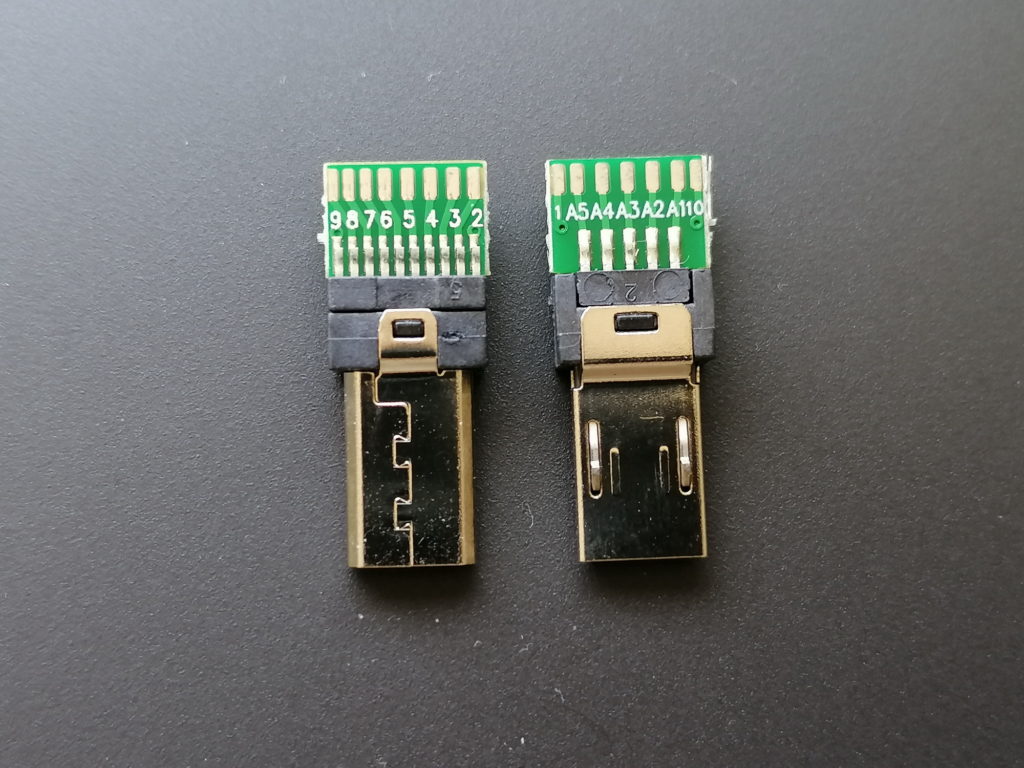
With such connectors I was able to tailor a dual cable adapter, to charge and trigger the camera at the same time! I took a USB cable with male type A connector and a headphone extender cable with male 3.5mm plug. I chose both cables around 1m in length. This should be long enough in most use cases, but not too long to reduce charging performance.
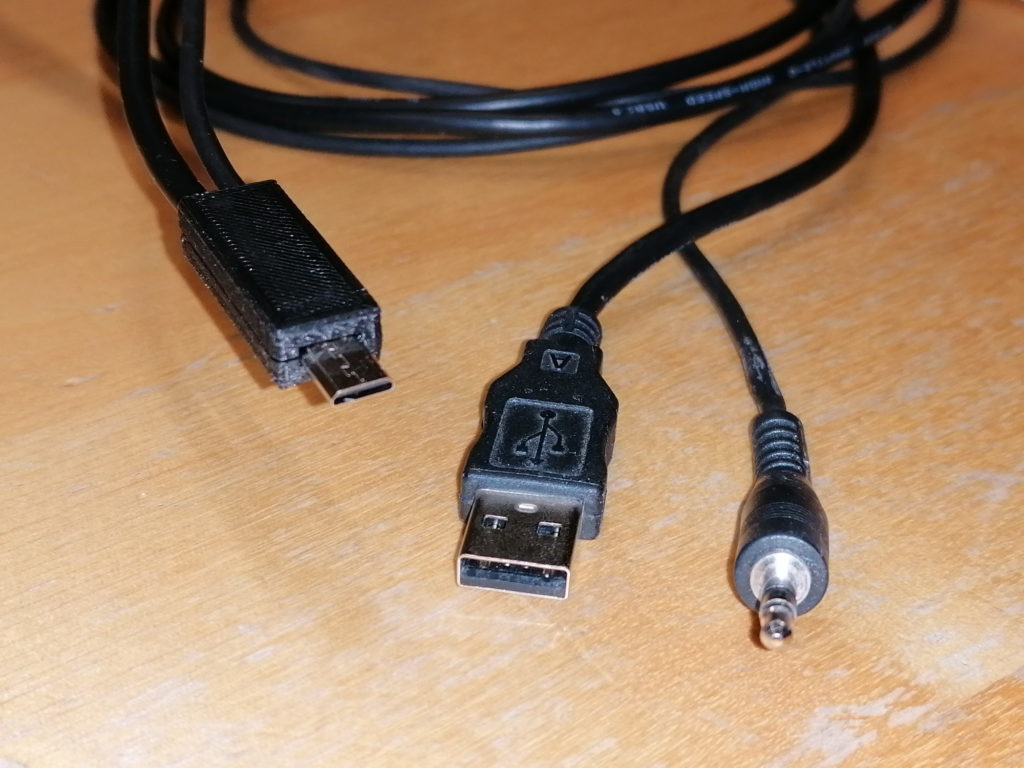
The 3.5mm plug fits some of my trigger devices. All the others have 2.5mm plugs, for which I have adapter calbes in use. Most computer timer remotes with interchangeable camera plug sold, have a 2.5mm female audio jack. See attached image for the typical pinout.
Soldering the two cables to the tiny solder pads requires a steady hand and experience in soldering. The USB as well as the audio cables have quite thin wires (AWG26 to AWG28, which equals to 0.12 mm² to 0.08 mm²), except the USB power wires (AWG22 or AWG24 in quick charge cables, which equals to 0.32 mm² and 0.20 mm²). The wires are rather stiff. Therefore, aligning the wires to the solder pads may be tricky. It gets especially tricky, if the wires are exposed from the outer isolation for less than a centimeter.
Advice: Always check the finished cable for shorts and proper contact with a multimeter!
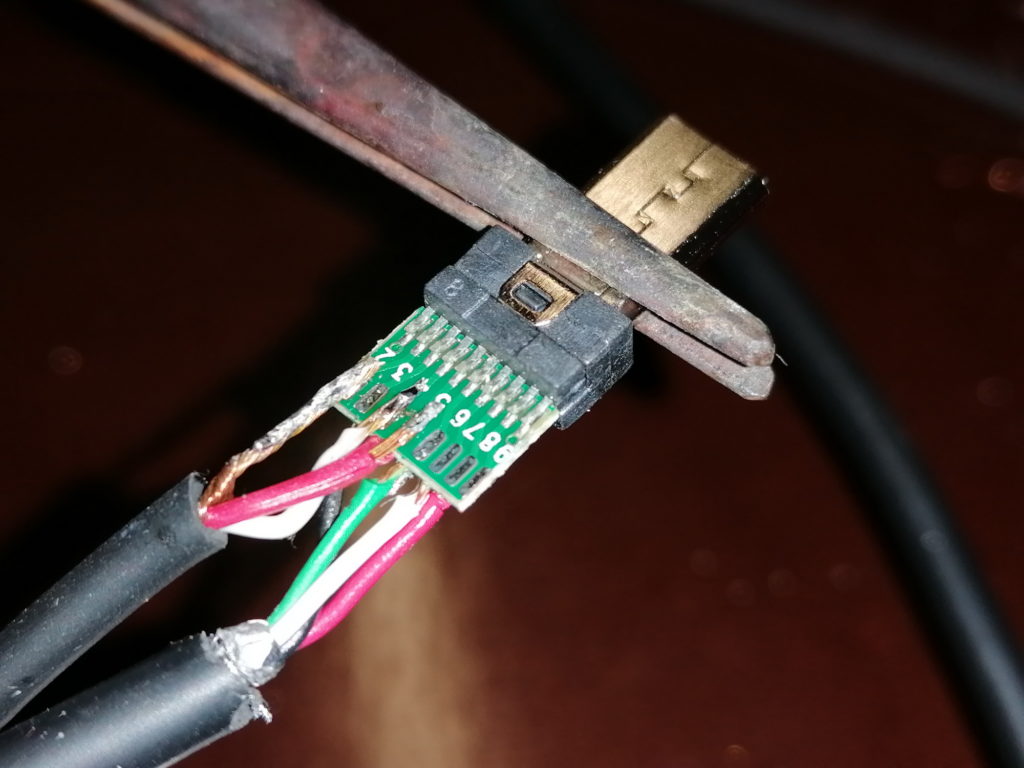
To reduce wear, which may lead to wires breaking off the solder pads, I designed a connector housing / case. The housing holds the adapter as well as the cables in place. Furthermore, this is the only proper way to handle the connector upon pluggin to / unpluggin from the camera.
The connector case is 3D printed. I share the STL file on Thingiverse here:
https://www.thingiverse.com/thing:4279366
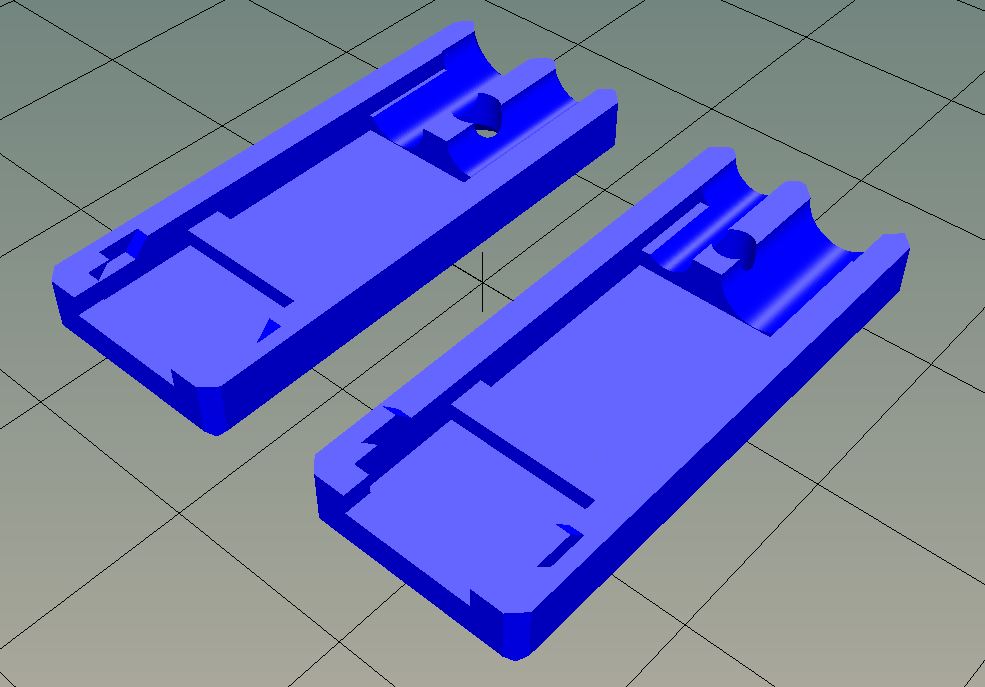
Disclaimer:
This is a guide put together as reference for me. If you follow this description, you will do so on your own risk. I may not be held responsible for any damage or injury caused!
